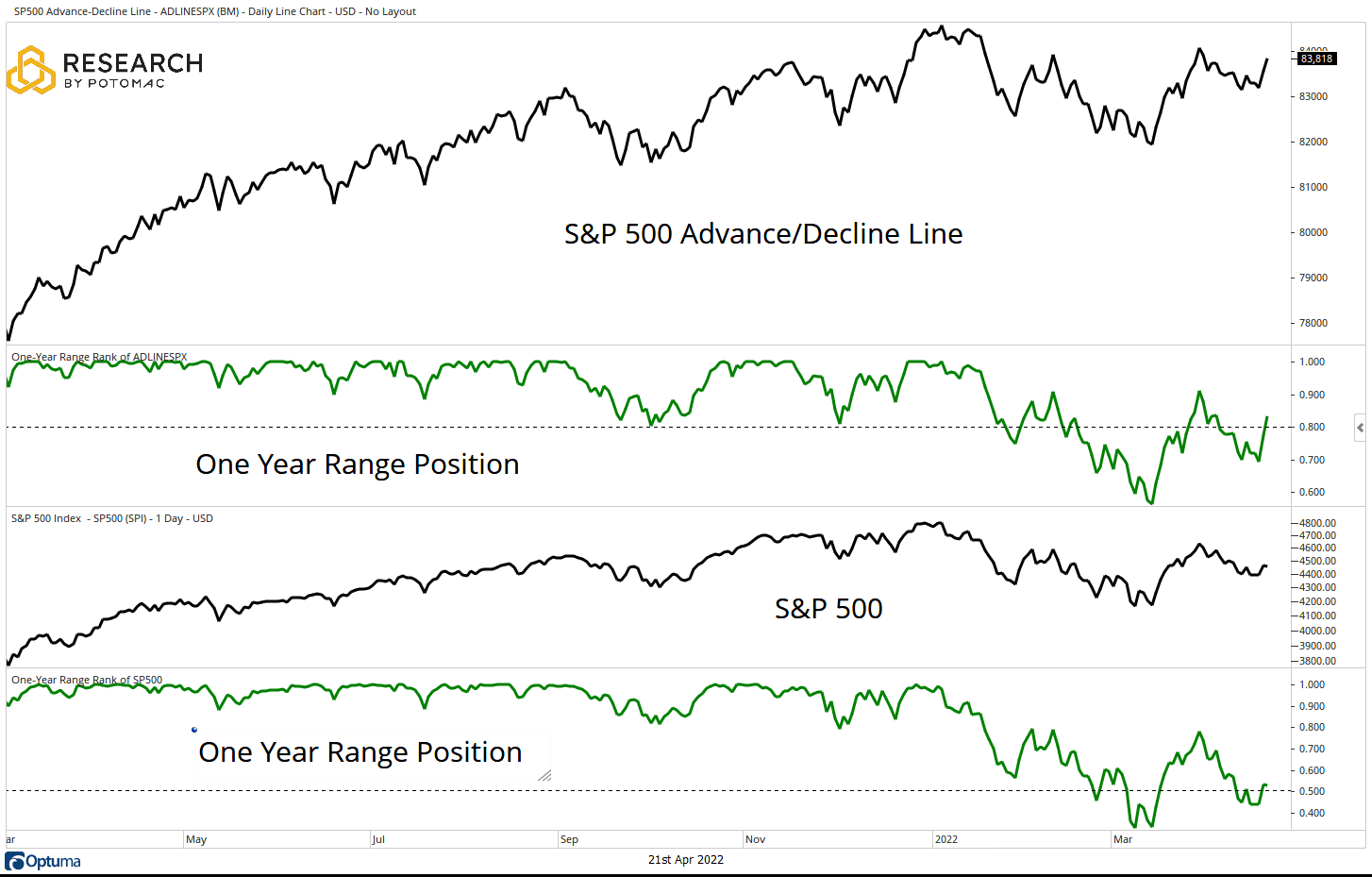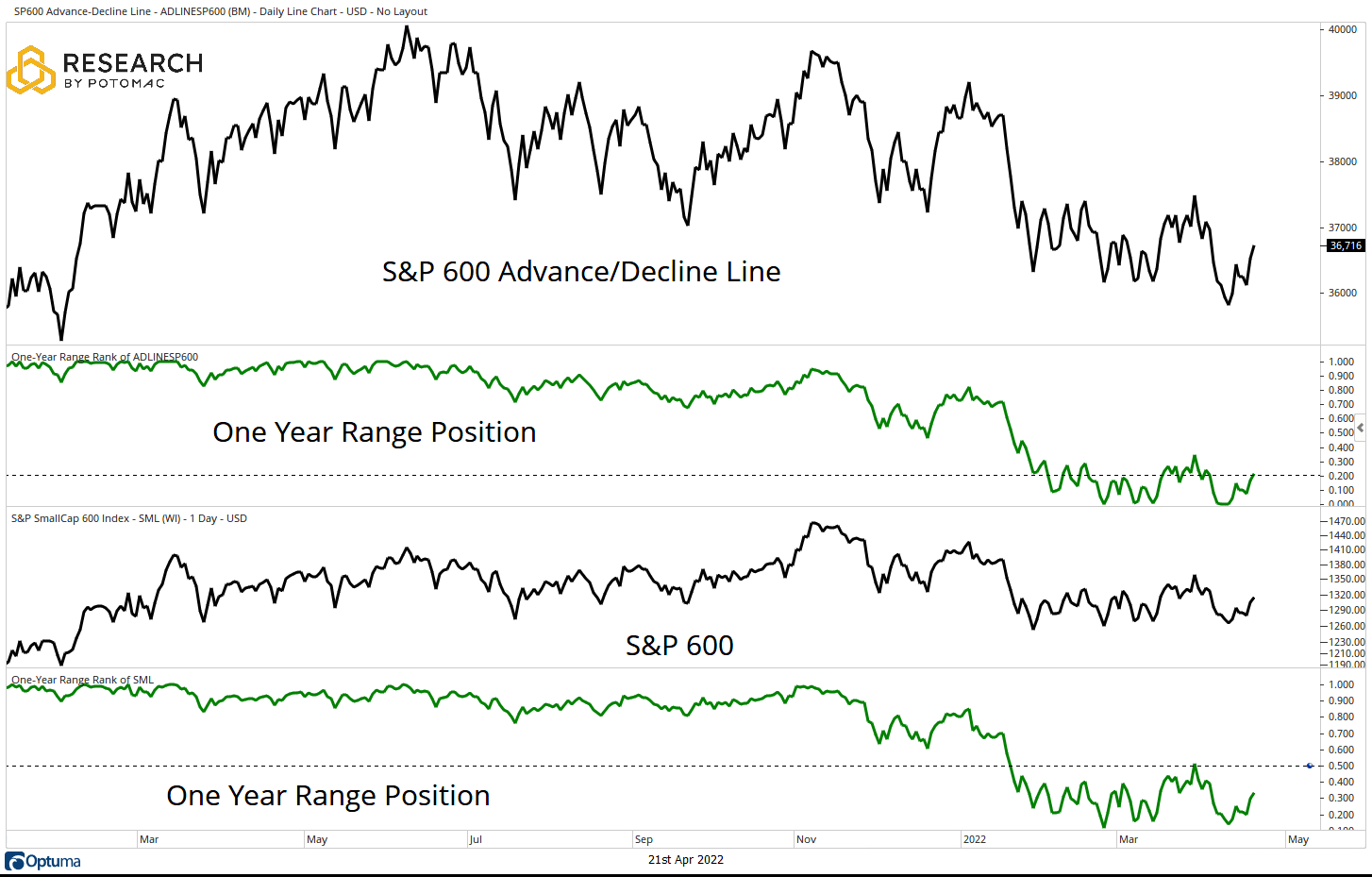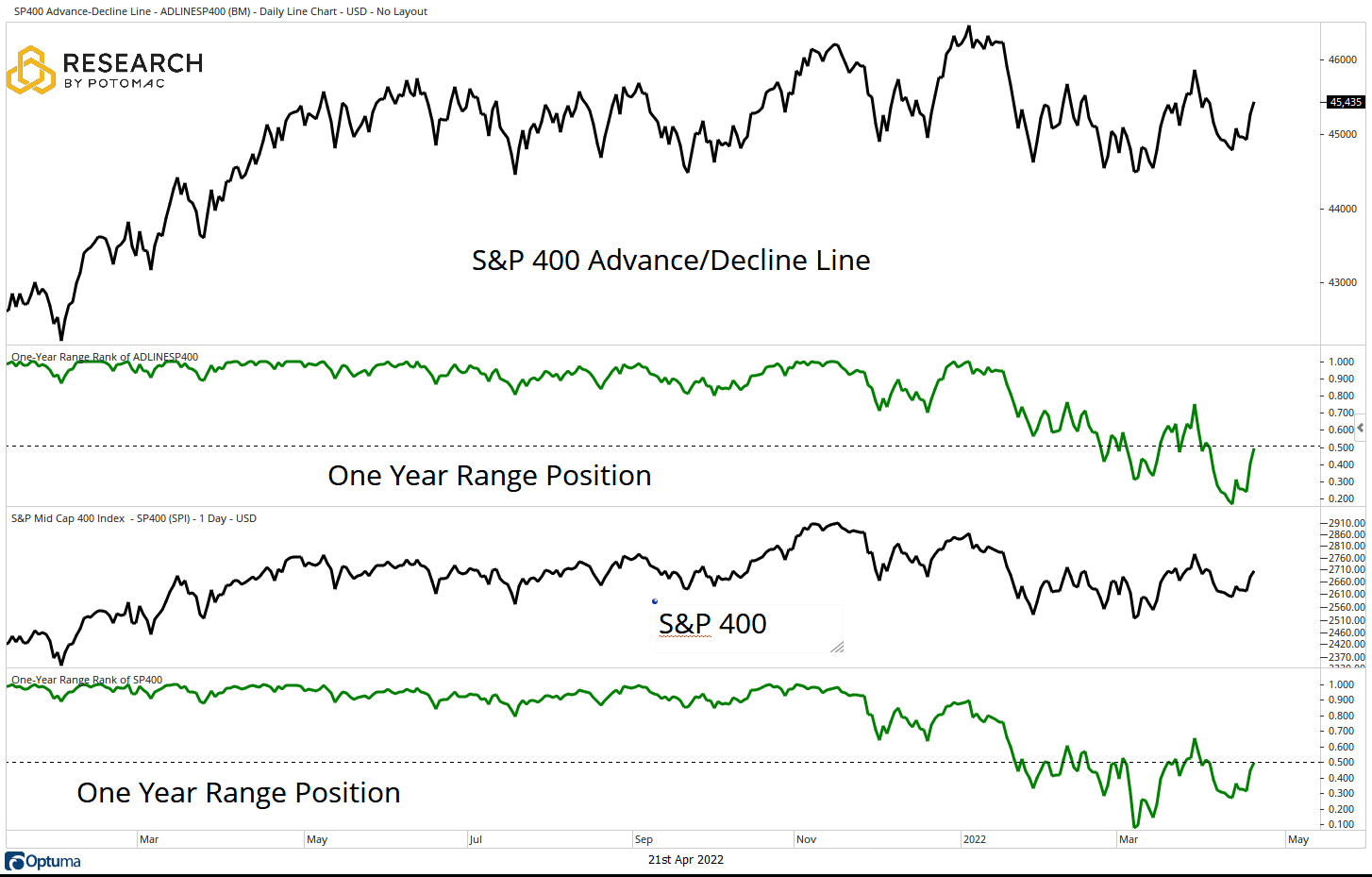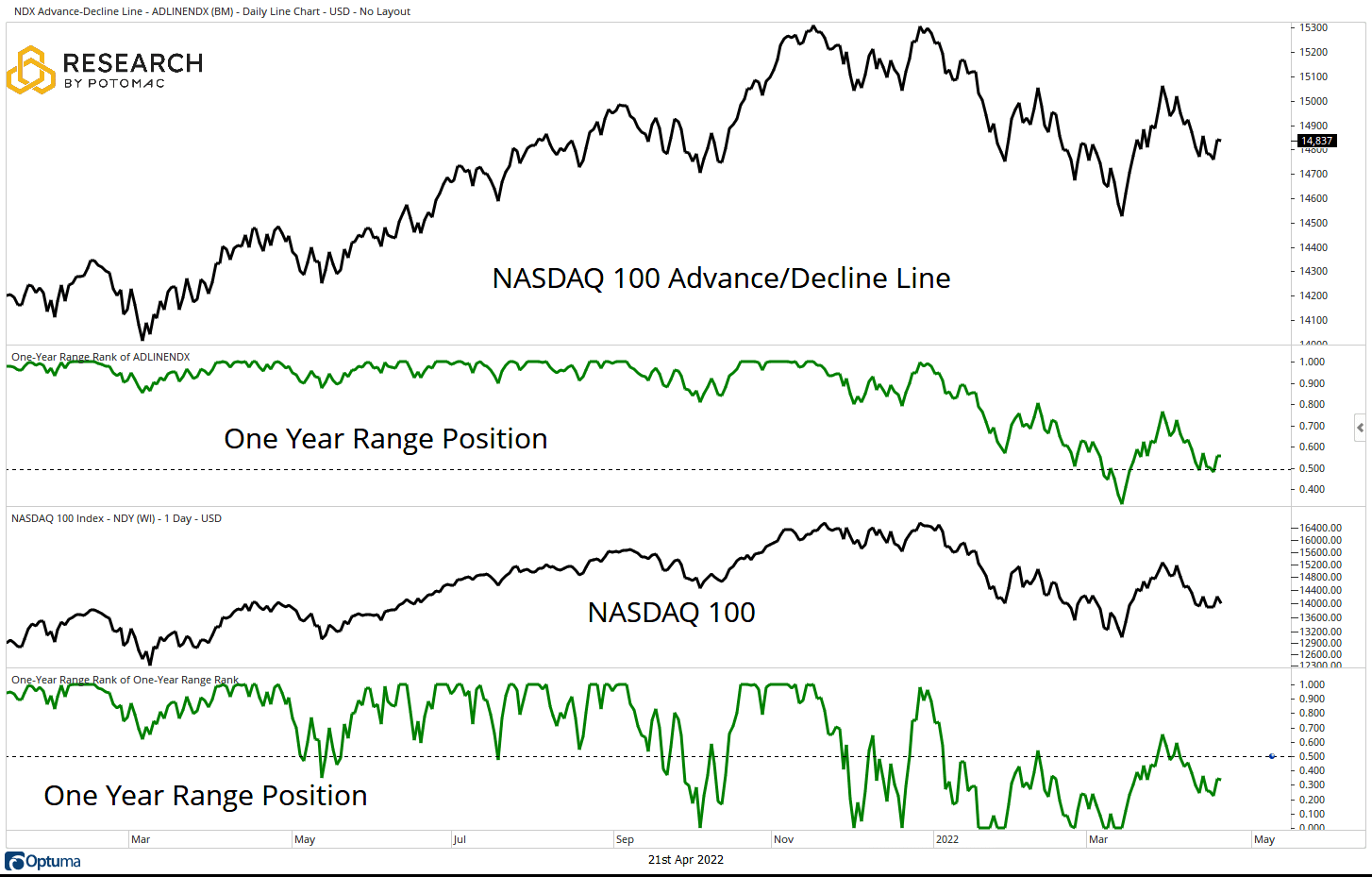
There are many ways to measure market breadth, but one of the most common is the Advance/Decline Line for a specific index. However, because the A/D Line is a cumulative indicator, its absolute reading does not tell us all that much. In this note, we will look at the major U.S. averages and attempt to add context to the current position of the various A/D Lines. We do this by comparing the current level of the indicator to its one-year range. A reading of 1 means that the A/D Line is at its annual high, a reading of 0 means that it is at its annual low, and a reading of 0.5 means that the indicator is in the middle of the range for the year.
One Year Range Positions for Major U.S. Markets
For the S&P 500, there is an interesting development playing out in that the A/D Line is above the 80th percentile of its one-year range while the index is trading near the 50th percentile. Participation within the S&P 500 can be labeled as strong based on these metrics. The problem for equity bulls is that their Technology sectors have been a laggard, and it accounts for a large weight in the index. Strength on the part of Energy and Materials may not be enough to counteract weakness in the Technology space.

The S&P Small Cap 600 has an A/D Line that is below the 20th percentile of its one-year range. The index itself is in the lower half of its yearly range. A weak trend is confirmed by weak breadth.

For the S&P 400, both the A/D Line and the index are in the middle of their respective annual ranges.

The NASDAQ 100 boasts an A/D Line that is in the upper half of its annual range, while the index is in the lower half of the range. This is an interesting development for a lagging index. Should the A/D Line cross above 80%, bears will have to take notice.

Disclosure: This information is prepared for general information only and should not be considered as individual investment advice nor as a solicitation to buy or offer to sell any securities. This material does not constitute any representation as to the suitability or appropriateness of any investment advisory program or security. Please visit our FULL DISCLOSURE page.
